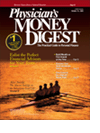Retirement Strategies
An election year is no time toexpect straight talk about theimpact of the Bush administration's taxcuts on the well to do. When the mediadoes stories about the wealthy (eg,physicians) getting the big tax benefits,the arguments are usually presented indollar terms—the rich get a tax breakworth thousands of dollars, while themiddle class makes do with just hundredsof dollars. But when you look atthe picture in terms of how much ofthe overall tax bill the wealthy pay, thepicture looks quite different. A recentreport from the Congressional BudgetOffice (CBO) was spun in the media as"proving" that the president's tax cutsfavored the rich, when it actuallyproved that, in percentage terms,upper-income taxpayers are actuallypaying more of the total income taxesthan they did before the tax cuts.
According to the CBO figures, thehighest-earning 20% of Americanhouseholds would have paid 78.4% ofall income taxes without the Bush taxcuts. Now, thanks to the tax breaks,their share of the income tax burdengoes up to 82.1%. The wealthiest ofthe wealthy (ie, the top 1% of earners)are now paying 32.3% of the total taxburden, compared with the 31.6%they would have paid before the taxcuts. At the other end of the scale, thebottom 20%, who paid no incometaxes before the tax cuts but actuallygot money back from the IRS, get evenmore cash under Bush's income taxreforms. And the share of the tax billpaid by the middle 20% of US householdsdrops from 6.4% to 5.4%.
Overall, the net income tax revenueto the government from those in thebottom half of the income spectrum iszero. The logic of the tax cuts, whichseems to escape most of the media, isthat tax breaks go to those who paytaxes; a higher tax bill means a biggertax break—in dollars. But the percentageshare of the overall taxes thatupper-income taxpayers shell out actuallygoes up.
